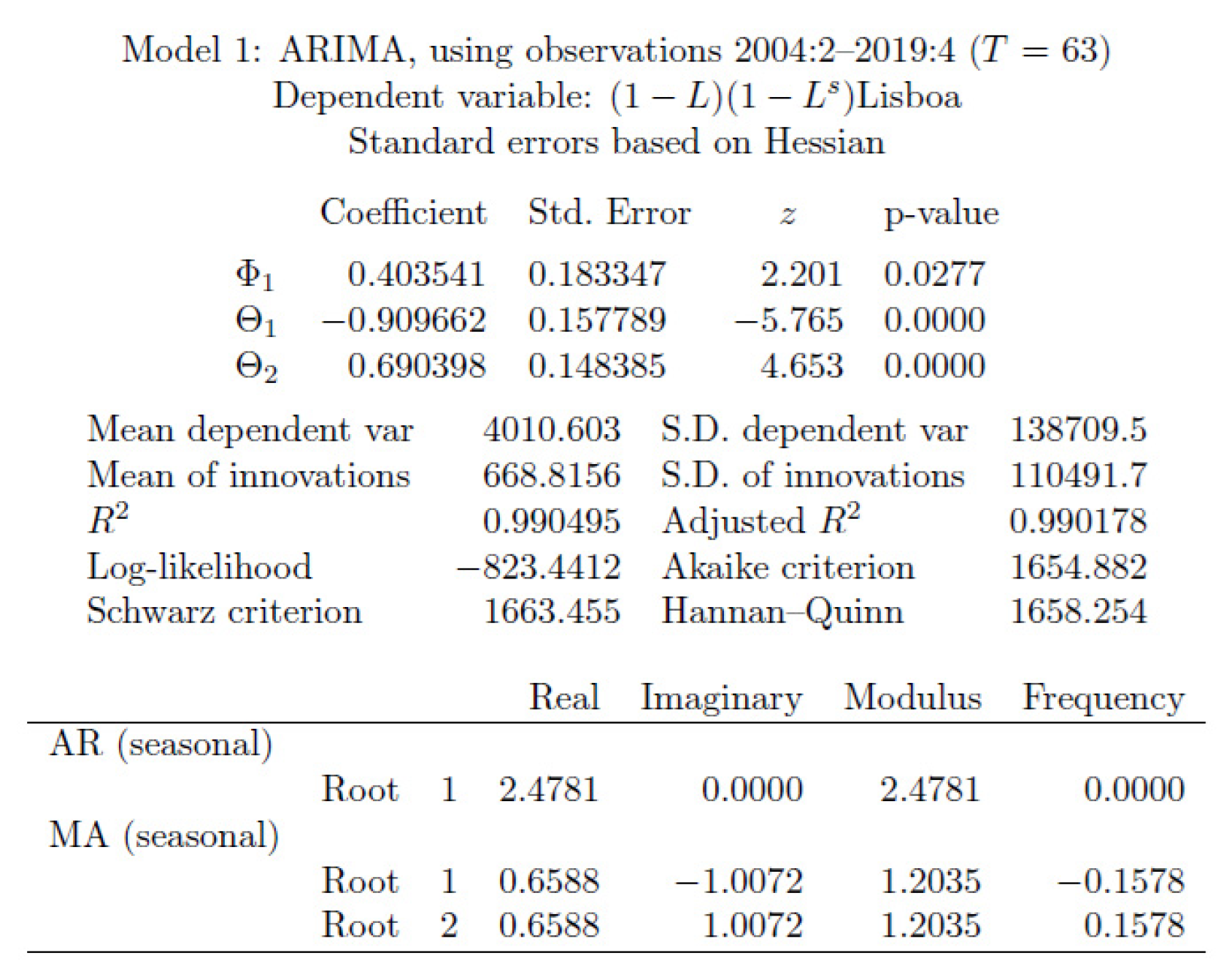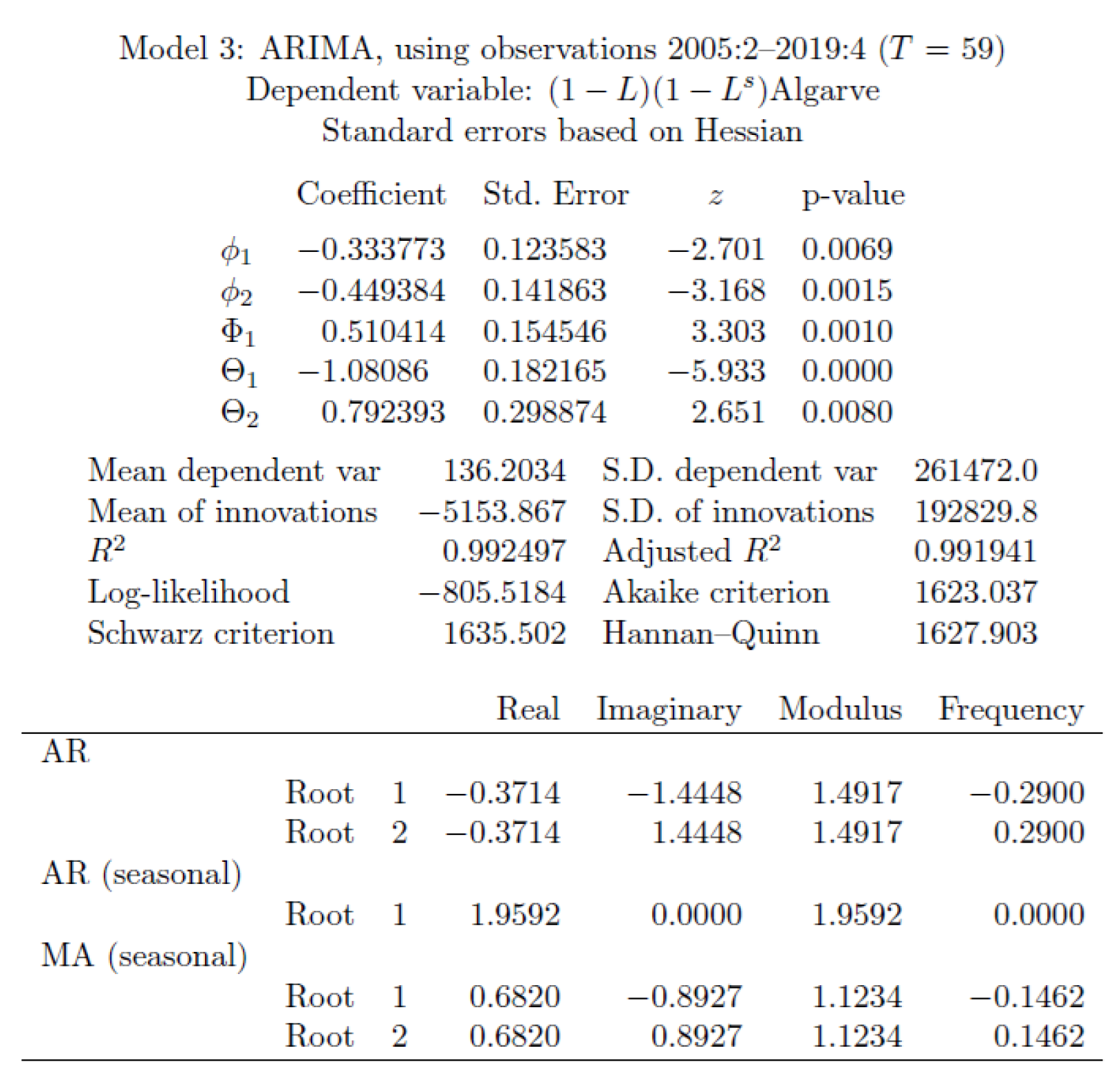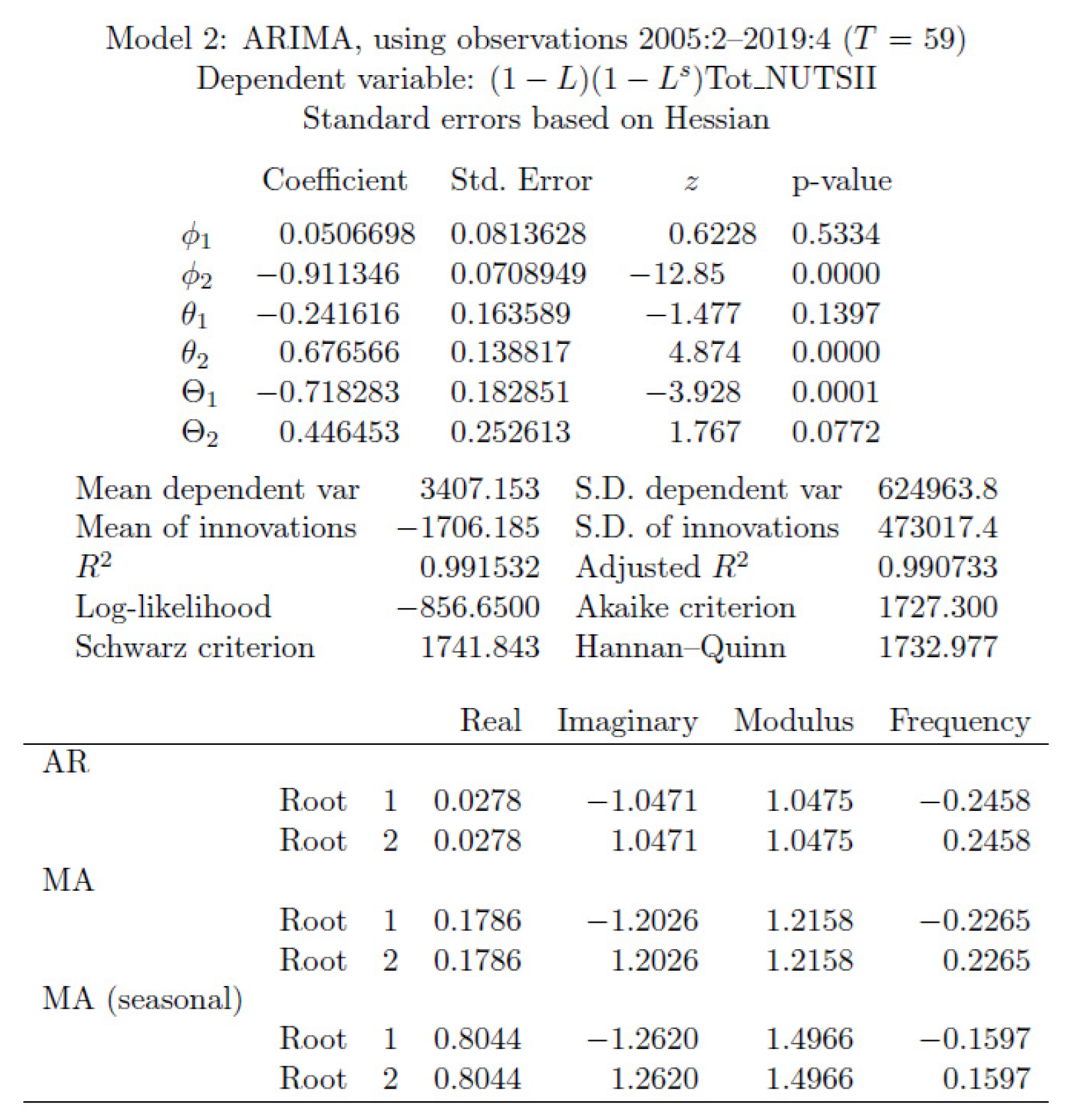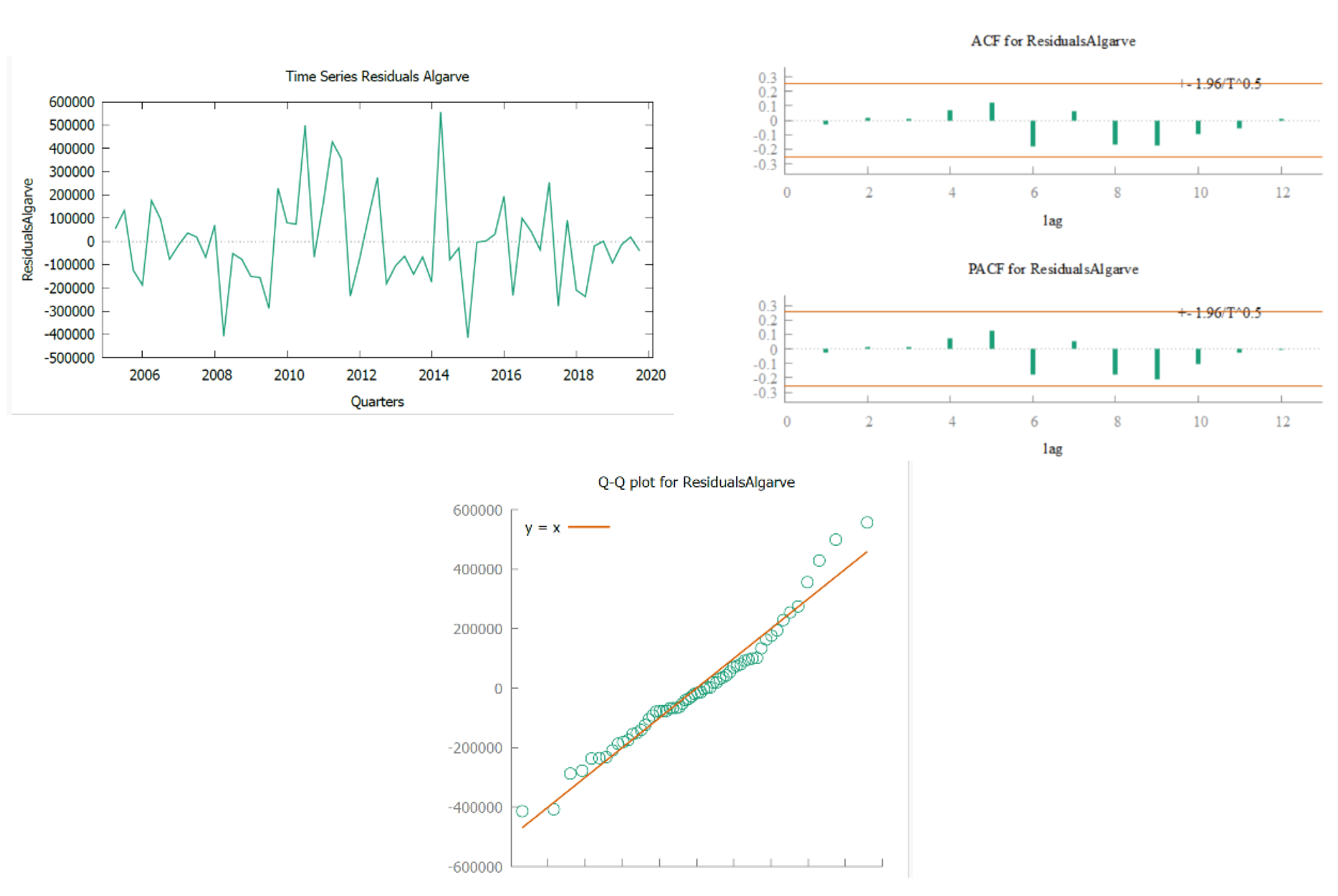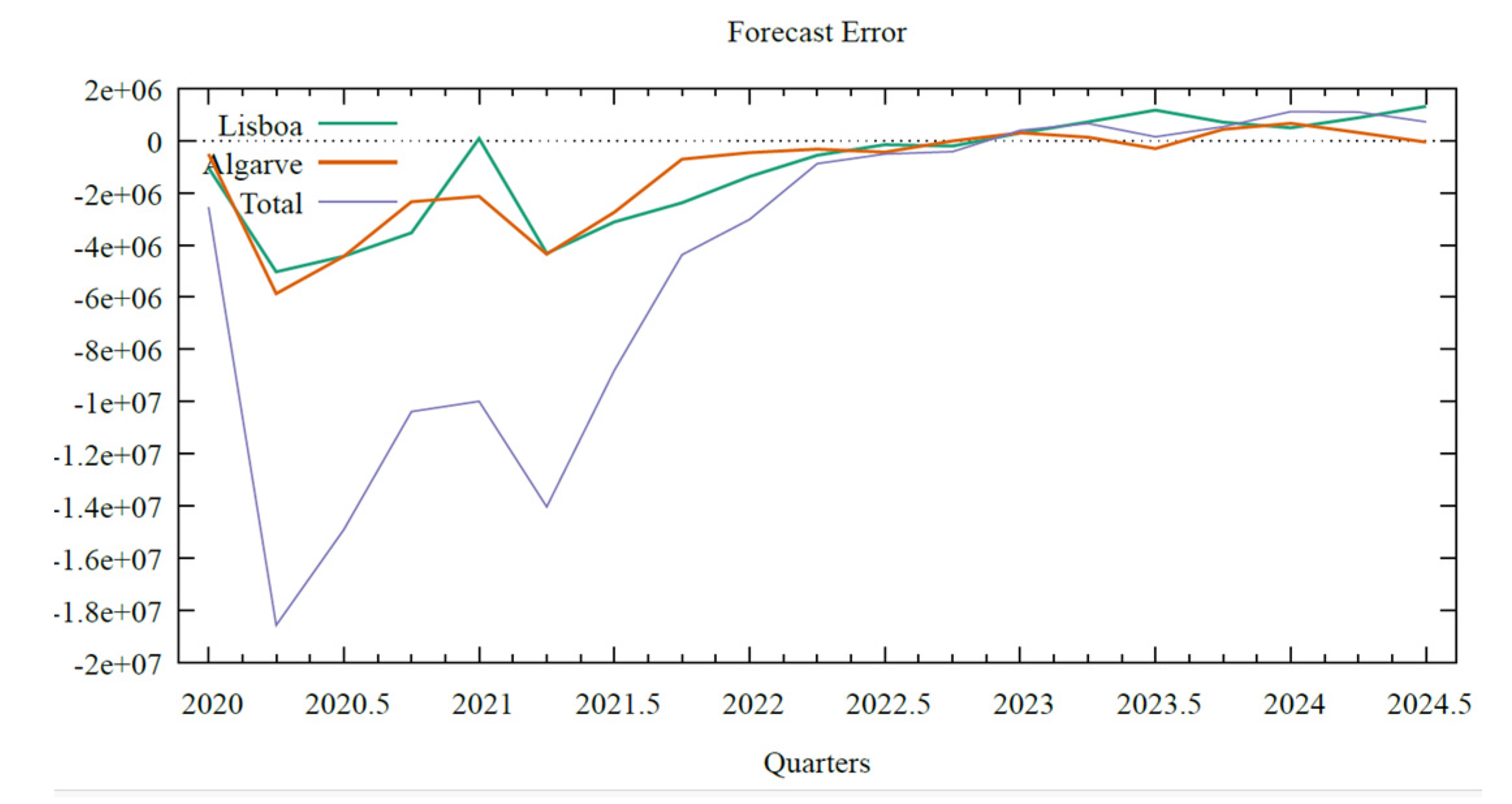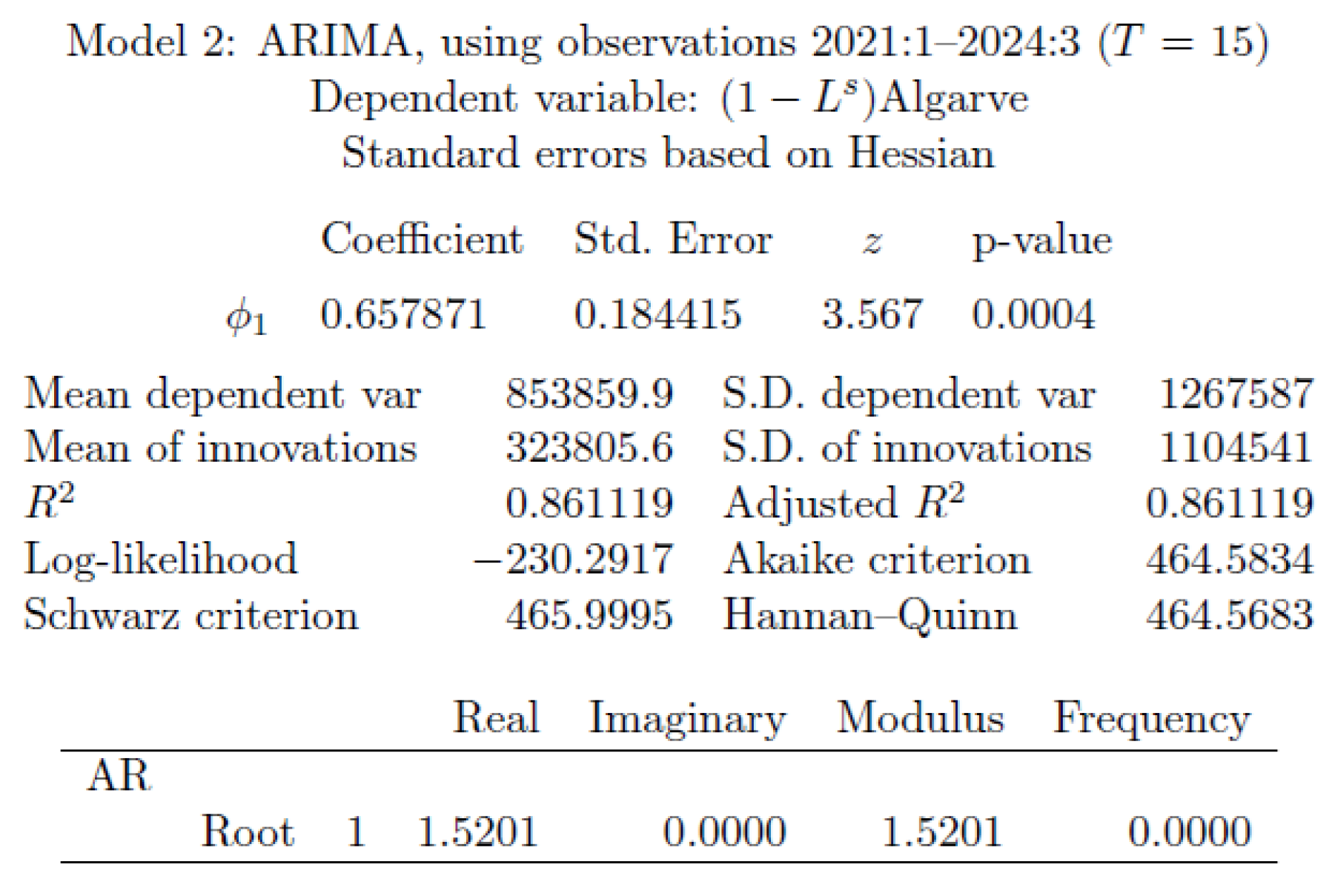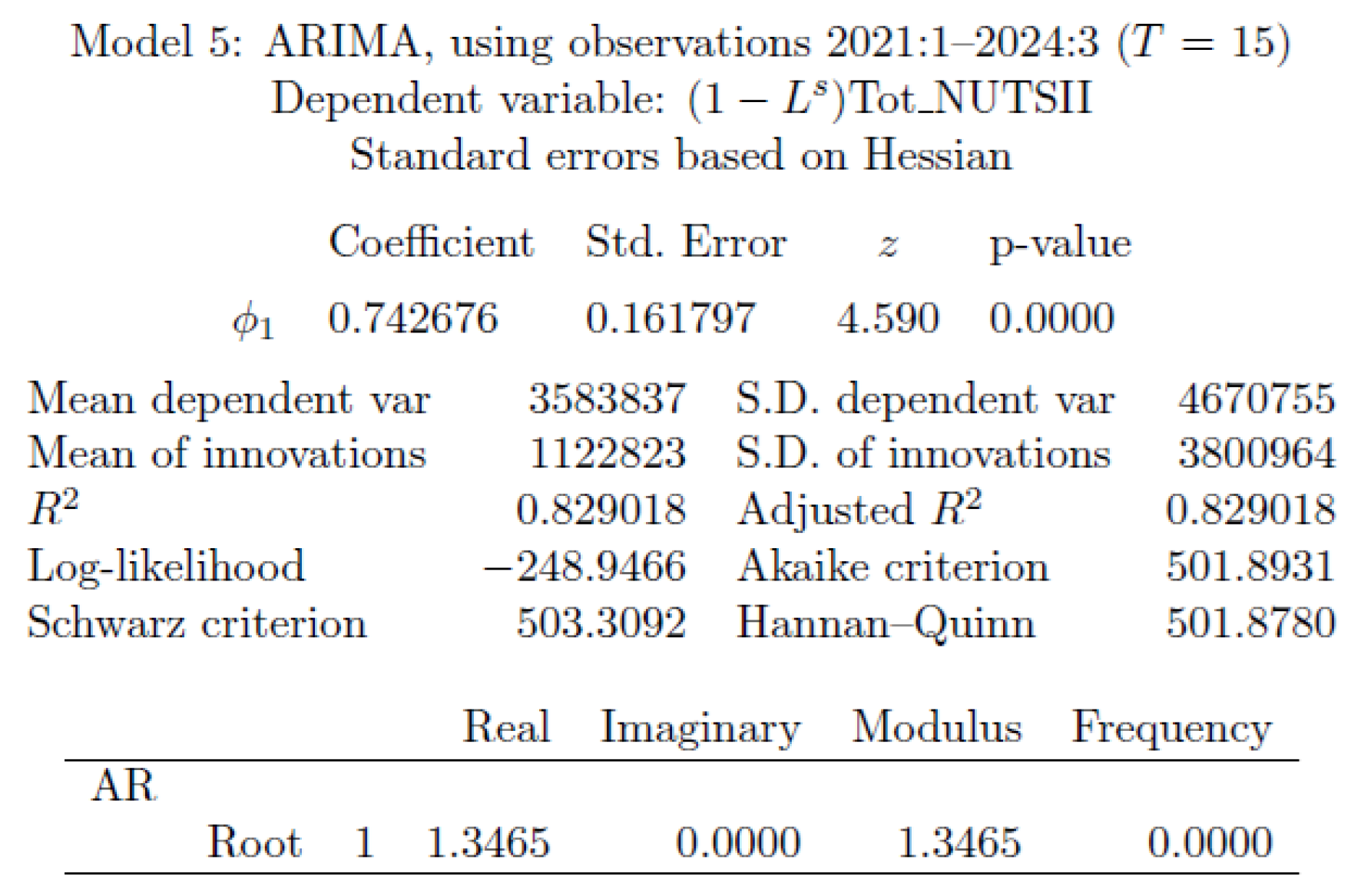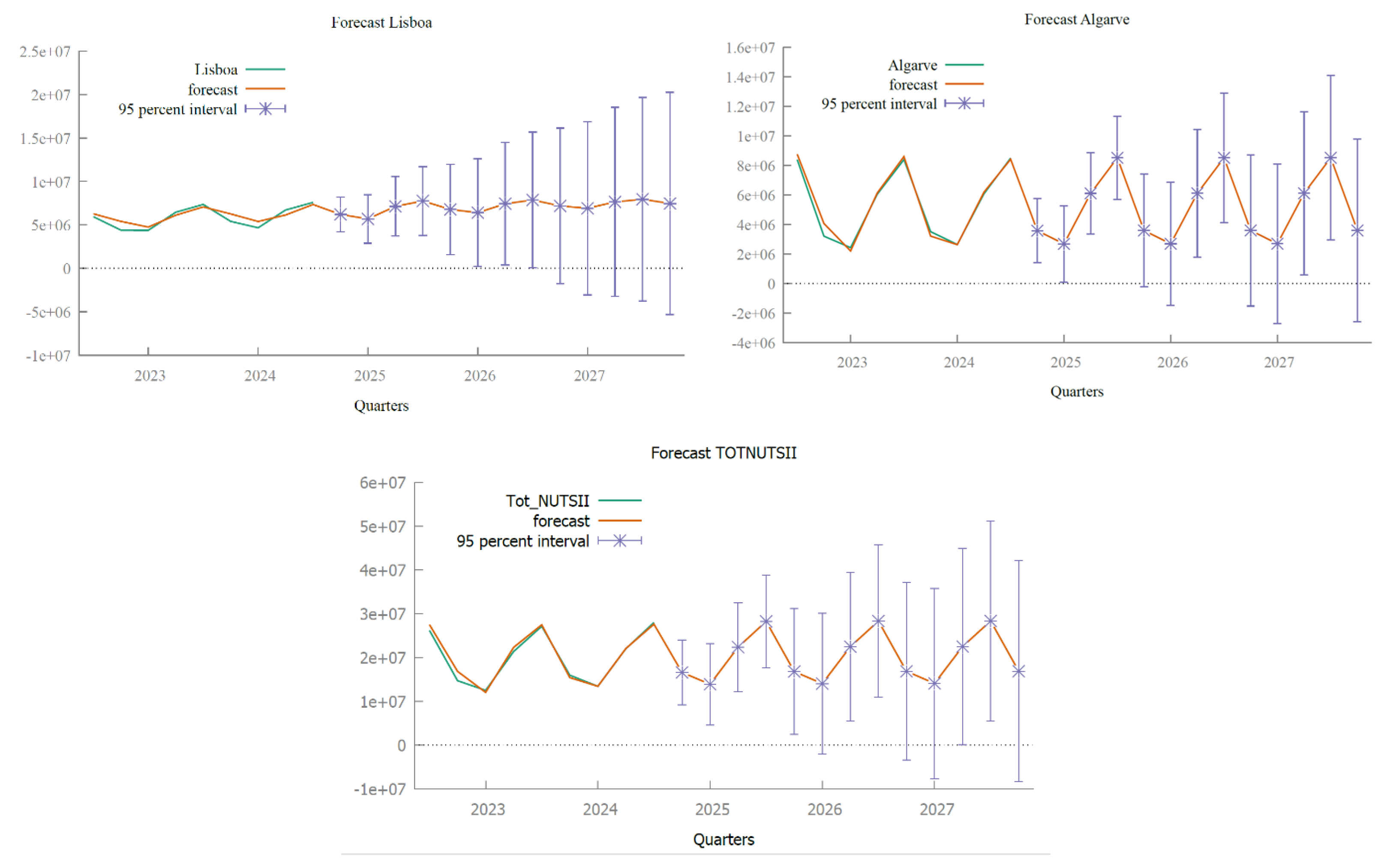Impacts of the Financial by NUTS II Regions
The 2008 financial crisis, resulting from market deregulation, had a profound impact on tourism in Portugal, reflected in reduced investment, declining consumer confidence, and decreases in overnight stays and occupancy rates across several regions, with unequal intensity between Lisbon, the Algarve, and other NUTS II territories. This vulnerability of the sector highlights the need to strengthen its resilience and sustainability, in line with the Sustainable Development Goals (SDGs). SDG 8 (Decent Work and Economic Growth) underscores the importance of fostering tourism that is less exposed to global financial shocks; SDG 10 (Reduced Inequalities) draws attention to the asymmetric effects of the crisis across regions; SDG 11 (Sustainable Cities and Communities) stresses the role of balanced management of urban and coastal destinations; and SDG 12 (Responsible Consumption and Production) reinforces the need for more balanced models of tourism consumption. Thus, the experience of the crisis demonstrates that the sustainability of tourism depends not only on environmental factors but also on its economic and social robustness in the face of external crises.
A summary, in
Table 4, is presented with the quarterly unit rates of change in three different periods: 2007 to 2008, which reflects the period before and during the crisis; 2008 to 2009, during and after the crisis; and 2009 to 2010, the post-crisis period, to verify the recovery or persistence of the effects.
In 2008, the tourism sector in Portugal was deeply affected by the global financial crisis that broke out in the middle of the year. This impact was reflected in the quarterly rates of change in the number of overnight stays in the country’s main tourist regions: Lisbon, the Algarve, and the NUTS II.
In 2008, the global financial crisis led to a sharp decline in tourism in Portugal, with the steepest drops occurring in the third and fourth quarters of that year. The Algarve, being more dependent on international tourism, was the most affected region.
In 2009, the first quarter continued to show strong declines, but Lisbon started to recover by the end of the year, while the Algarve still faced significant losses. At the national level, the downturn eased, marking the beginning of a gradual stabilisation.
In 2010, the sector entered a recovery phase, with Lisbon recording consistent growth in all quarters. The Algarve recovered more slowly but achieved positive results in the third and fourth quarters. Overall, Portugal experienced a progressive rebound, particularly in the second half of the year, which marked a positive turning point for tourism.
The quarterly variations in overnight stays observed in 2009 and 2010 are consistent with the results of the Chow test. For Lisbon, Algarve, and Total NUTS II, the test for a structural break at the first quarter of 2008 yielded very high p-values (0.9972, 0.9497, and 0.9870, respectively), indicating no evidence of a significant structural change in the series. This suggests that the 2008 financial crisis did not cause a permanent break in the historical trend of overnight stays, and that ARIMA models based on the full time series remain valid and robust despite short-term fluctuations during the crisis.
Brexit had a significant impact on overnight stays in all of Portugal’s NUTS II regions, given their strong dependence on UK tourists as an inbound market. Although Brexit and the COVID-19 pandemic overlapped in time, they should be analysed separately to identify their specific effects. However, since the data does not distinguish British holidaymakers, this will not be a priority in this article. Brexit (effective from 2021) introduced bureaucratic barriers, visa requirements, and exchange rate fluctuations, which may have reduced the flow of British tourists to Portugal. From a theoretical perspective, if the decline after 2021 is observed only in relation to UK visitors, this would point to a specific Brexit effect. In sustainability terms, this reinforces the importance of SDG 8 (Decent Work and Economic Growth) and SDG 11 (Sustainable Cities and Communities), as reducing dependency on a single source market is key to building a more resilient and sustainable tourism sector.
COVID-19 has had a drastic impact on tourism due to travel restrictions, causing sharp falls and irregular recoveries. We will now analyse the impact of COVID-19 through the year-on-year rates of change in quarterly overnight stays in Portugal’s NUTS II regions, starting by analysing behaviour in the pre-pandemic vs. pandemic period, while also considering implications for sustainable tourism development in line with the UN Sustainable Development Goals (SDGs), particularly those related to economic resilience, decent work, and responsible consumption.
The immediate impact, measured by the rates of change in the quarters from 2020 to 2019 (
Table 5), reflects the period with the greatest restrictions.
According to the information above, the most severe impact occurred in the 2nd quarter of 2020, largely due to lockdowns and travel restrictions caused by the pandemic crisis, with decreases of over 90% in all regions. The Lisbon region was the most affected, especially in the 2nd and 4th quarters. The Algarve, despite the sharp declines, performed relatively better in terms of overnight stays, particularly in the 3rd quarter, which may suggest some degree of recovery through domestic or international tourism, albeit limited. The Total NUTS II followed the trend of the Lisbon and Algarve regions, reflecting the national pattern.
In the subsequent recovery phase, we analysed the quarters of 2021 compared with 2020 (
Table 5), as well as the rates of change for 2022 compared with 2019, to assess whether overnight stays had returned to pre-pandemic levels.
Between 2020 and 2021, both Lisbon and the Algarve were severely impacted by the pandemic, recording historic falls in 2020 and a slow recovery in 2021. From the 2nd quarter of 2021 onwards, variations turned slightly positive, with Lisbon reaching the maximum growth rate (3.8%). Nevertheless, these figures reveal the persistence of restrictions and the sluggish recovery of the tourism sector. Overall, Lisbon was the region most affected during the period, while the Algarve showed some seasonal resilience. Both territories, however, ended 2021 still well below pre-pandemic levels.
The comparison between 2022 and 2019 (
Table 6) allows us to gauge the degree of structural recovery after two years of pandemic impact. The evolution of the Lisbon and Algarve regions shows that, despite some positive signs, the sector was still recovering, with results still below pre-pandemic levels. In the 1st quarter, both regions showed sharp falls compared to 2019: Lisbon (−25.4%) and the Algarve (−23.6%), revealing a still fragile recovery at the start of the year. In the 2nd quarter, there was almost a complete recovery in Lisbon (−1.9%), while the Algarve saw a more significant drop (−7.8%). The 3rd quarter, historically the strongest for tourism, showed an increase in Lisbon (+3.1%), but a decrease in the Algarve (−6.9%), showing a reversal from previous years when the Algarve was more resilient in the summer. In the 4th quarter, Lisbon grew again compared to 2019 (+3.9%), while the Algarve remained below the pre-pandemic level (−3.5%). In short, Lisbon surpassed 2019 levels in the last two quarters, demonstrating a more solid recovery, while the Algarve remained below pre-pandemic values throughout the year, suggesting a slower and more uneven recovery between regions.
Between 2020 and 2022 (
Table 5 and
Table 6), Lisbon and the Algarve faced sharp falls due to the pandemic, with a slow and uneven recovery over the years. The year 2020 was the most critical: falls of over 90 per cent in the 2nd quarter in both regions. Lisbon was the worst affected overall, with sharper falls in all quarters. The year 2021 marked the beginning of a recovery, but still with very modest variations. The Algarve had a weak summer, and Lisbon recovered slightly better in the 2nd quarter. The year 2022 shows a more evident recovery in Lisbon, which surpassed 2019 levels in the last few quarters. The Algarve, on the other hand, remained below pre-pandemic values throughout the year, signalling a slower recovery.
Finally, to assess the long-term trend, comparing 2023 with 2019 makes it possible to see whether the recovery has been sustained and whether structural changes are possible. Comparing the number of overnight stays in 2024 with 2019 aims to assess the recovery (or change) in 2024 (
Table 7).
In 2023, compared to 2019 levels, the trends in the Lisbon and Algarve regions are quite different. Lisbon showed a strong recovery in all quarters, with consistent growth of between +24.9% and +27.7%, signalling a solid and sustained recovery, well above pre-pandemic levels. The Algarve had a more irregular behaviour, with growth in the 1st quarter (+2.3%), followed by falls in the 2nd (−2.7%) and 3rd quarters (−6.8%), even in high season. Only in the 4th quarter was there a visible recovery (+5.7%).
Lisbon’s superior performance in 2024 compared to the Algarve can be attributed to a combination of factors. The Lisbon region has benefited from a diversified tourist profile, the recovery of urban and business tourism, and greater international appeal. In contrast, the Algarve has faced challenges due to the seasonality of tourism, growing competition, and changing tourist preferences. These factors, combined with economic difficulties, partly explain the region’s weaker performance. Additionally, the Algarve has traditionally been heavily dependent on the British market. Fluctuations in the UK economy and potential post-Brexit challenges, such as the devaluation of the pound and higher travel costs, may have negatively impacted the number of overnight stays by British tourists in the Algarve in 2024.
From a sustainability perspective, Lisbon has been able to leverage more diversified and year-round tourism activities, contributing to more resilient and balanced development aligned with sustainable tourism principles, while the Algarve’s dependence on seasonal and international markets underscores the need to promote sustainable practices that reduce vulnerability and enhance long-term economic and environmental resilience.
To better contextualise these findings, it is important to compare the relative impacts of the 2008 financial crisis and the COVID-19 pandemic on Portuguese tourism, assessing not only the magnitude of the declines but also the speed and nature of the subsequent recovery.
In comparative terms, the 2008 financial crisis and the COVID-19 pandemic affected tourism in Portugal through different mechanisms and with contrasting magnitudes. The financial crisis led to relevant short-term declines, particularly in the Algarve, but recovery began within two years, and no permanent structural break was detected in the series, as confirmed by the Chow test. In contrast, the pandemic caused unprecedented contractions of more than 90% in the second quarter of 2020, with a slower and more uneven recovery across regions. Lisbon proved more resilient in the medium term due to a more diversified tourism profile, while the Algarve remained more vulnerable to seasonal dependence and exposure to specific source markets. Overall, COVID-19 had the most severe and persistent impact, fundamentally altering the trajectory of tourism recovery, while the 2008 crisis mainly exposed vulnerabilities without changing the sector’s long-term growth potential.

